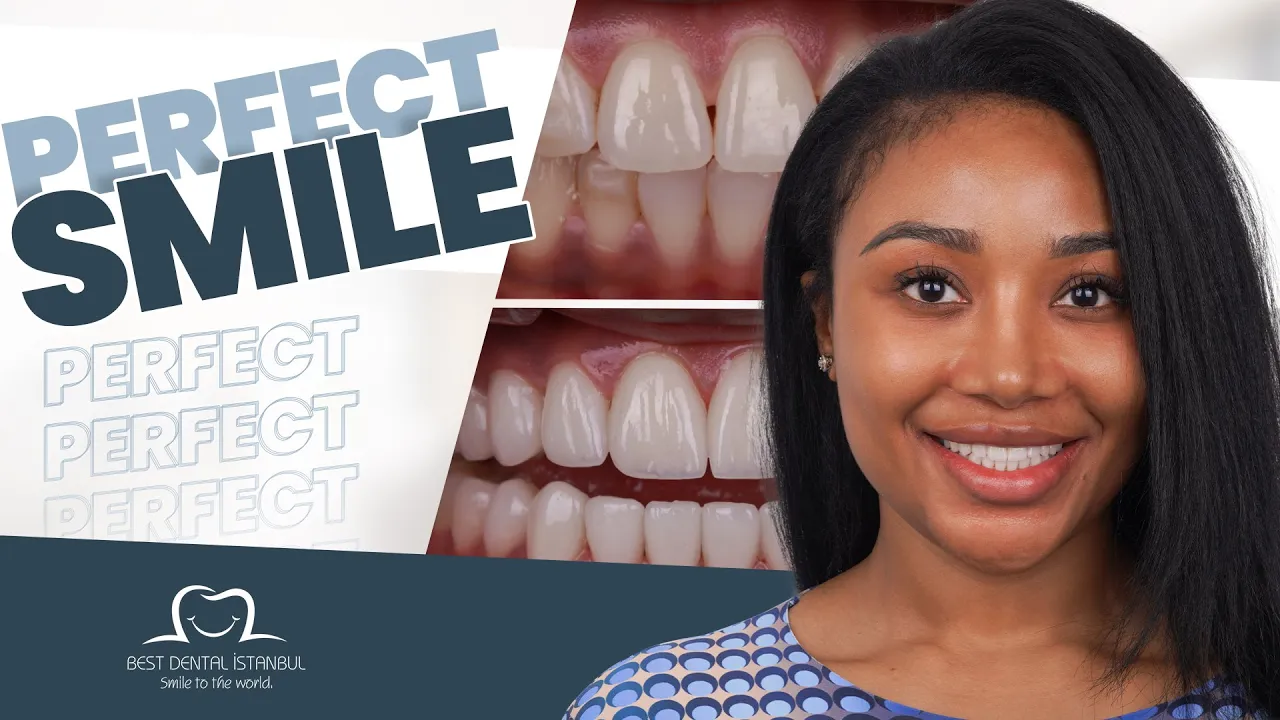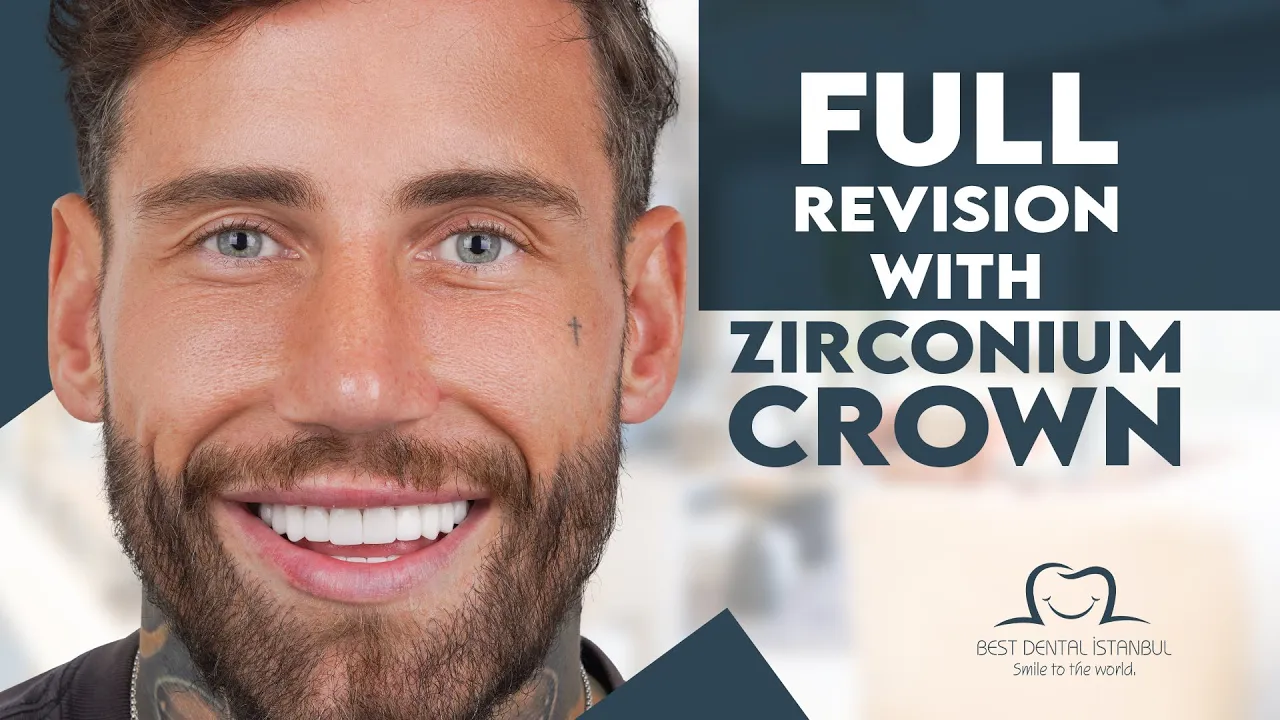Cosmetic Dentistry in Turkey
Cosmetic dentistry, also known as esthetic dentistry, has not been clearly defined by the American Dental Association (ADA). However, dentists define it as the method of dentistry that improves a patient’s smile and self-image. Having a beautiful smile and strong teeth are essential for many reasons—aesthetically and in relation to overall health.
What is the cosmetic dentistry?
Cosmetic dentistry, also known as esthetic dentistry, has not been clearly defined by the American Dental Association (ADA). However, dentists define it as the method of dentistry that improves a patient’s smile and self-image. Having a beautiful smile and strong teeth are essential for many reasons—aesthetically and in relation to overall health.
An attractive smile, or lack thereof, affects your oral health. In addition, self-confidence and how the world perceives you on the outside are also impacted. This is because a person’s smile is usually the first feature anyone notices.
Esthetic procedures include dental veneers and teeth whitening. On the other hand, dental crowns, dental bridges, dental bonding, dental implants, inlays and onlays, and dentures are all restorative dental treatments.
Who Benefits From Cosmetic Procedures?
The most common age groups that undergo cosmetic dental procedures are those between 31 to 40 years old (38 percent) and 41 to 50 years old (32 percent). Ninety-six percent of esthetic dentistry patients are also female.
Why Choose Cosmetic Dentistry?
Cosmetic dentistry procedures can correct misshaped, chipped, discolored, and missing teeth.
There are simple and sophisticated solutions for fixing a smile, depending on the patient’s desired outcome. According to experts, there are many reasons why an individual is unhappy with their smile. For example, the most common causes are tooth discoloration, teeth crowding, and teeth gaps. Dental veneers are the most requested treatment because they can correct all of the cosmetic issues listed above.
It’s important to look for dentists who are qualified in the specific area of treatment you are seeking. For example, all dentists learn cosmetic techniques in traditional dental schools.
Although, some dentists invest more time and money into continuing education for cosmetic dentistry, which makes them better equipped than someone who hasn’t made the same investment. So, finding a dentist that focuses on cosmetic procedures ensures you will receive the highest quality treatment.



Types of Cosmetic Dentistry
Esthetic dental treatments are commonly referred to as “smile makeovers.” In particular, there are a few cosmetic procedures to choose from based on individual needs:
Teeth Whitening
Teeth whitening can be one of the simplest and least expensive ways to improve your smile. Teeth can be bleached with in-office products in your dentist’s office for about $500, or you can buy a mold and gels from your dentist to bleach your teeth at home. There are also whitening products available over the counter at retail stores for convenient at-home whitening: whitening toothpastes, rinses, and whitestrips. These products together run about $3 – $50.
Dental Veneers
Dental veneers are wafer-thin, custom-made shells of tooth-colored porcelain or resin that cover the front surface of the teeth. After removing about a half-millimeter of enamel from the tooth surface, these thin shells are bonded (cemented) to the front of the teeth, changing their color, shape, size, or length. Veneers are often called “Hollywood teeth.” Living up to that name, this process can cost up to $500-$1,300 per tooth.
Dental Bonding
In dental bonding, a tooth-colored, putty-like resin, which is a durable plastic material, is applied to the tooth and hardened with an ultraviolet or laser light, bonding the material to the tooth. Your dentist then trims, shapes, and polishes it. Bonding can repair decayed, chipped, cracked, or misshapen teeth; it is also a good cosmetic alternative to, or replacement for, amalgam or silver fillings. Bonding takes about 30 to 60 minutes, and $100 to $400, per tooth.
Dental Crown
A dental crown, also called a cap, fits over and replaces the entire decayed or damaged tooth above the gum line, restoring its shape, size, strength, and appearance. Crowns keep a weak tooth from breaking or hold a cracked tooth together; they can be used cosmetically to cover misshapen or severely discolored teeth. Crowns can be made from metal, porcelain-fused-to-metal, resin, or ceramic, and cost about $500 to $900 each.
Inlays and Onlays
Inlays and onlays, also called indirect fillings, are made from gold, porcelain, or composite materials and fill decayed or damaged teeth. Dental fillings are molded into place during an office visit; however, inlays and onlays are created in a dental laboratory and bonded into place by your dentist. The filling is called an “inlay” when the material is bonded within the center of a tooth; it is called an “onlay” when the filling includes one or more points of the tooth or covers the biting surface. Inlays and onlays preserve as much healthy tooth as possible and are an alternative to crowns. This cosmetic dentistry procedure costs about $650 to $1,200 per tooth.
Dental Implants
Dental implants are titanium replacement tooth roots inserted into the bone socket of the missing tooth. As the jawbone heals, it grows around the implanted metal post, anchoring it securely in the jaw and providing a foundation for a replacement tooth. This procedure can cost anywhere from $1,250 to $3,000.
Braces and Clear Aligners
Braces and clear aligners are orthodontic treatments, but they are also considered cosmetic by nature. This is because most people who invest in braces or clear aligners, such as Invisalign, do so to improve their appearance. In some cases, braces or clear aligners may be medically necessary.
Both devices put pressure on your teeth, which moves them into the correct positions over time. Children and teens often get traditional metal braces, while adults typically get clear braces or aligners because they are less noticeable.
Gum Contouring
Gum contouring is another cosmetic procedure that changes the shape of your gums. During the procedure, a dentist cuts away any excessive gum tissue that is causing a “gummy” smile. A gummy smile is when a person has too much gum tissue above their top teeth. Contouring can also be used to restore exposed teeth caused by receding gum tissue.
Other Options
A bridge is made of crowns for the teeth on either side of a gap with false teeth in between. A denture is a removable replacement for missing teeth. Dental braces can straighten crooked or misaligned teeth and works by applying continuous pressure over a period of time to slowly move teeth in a specific direction.
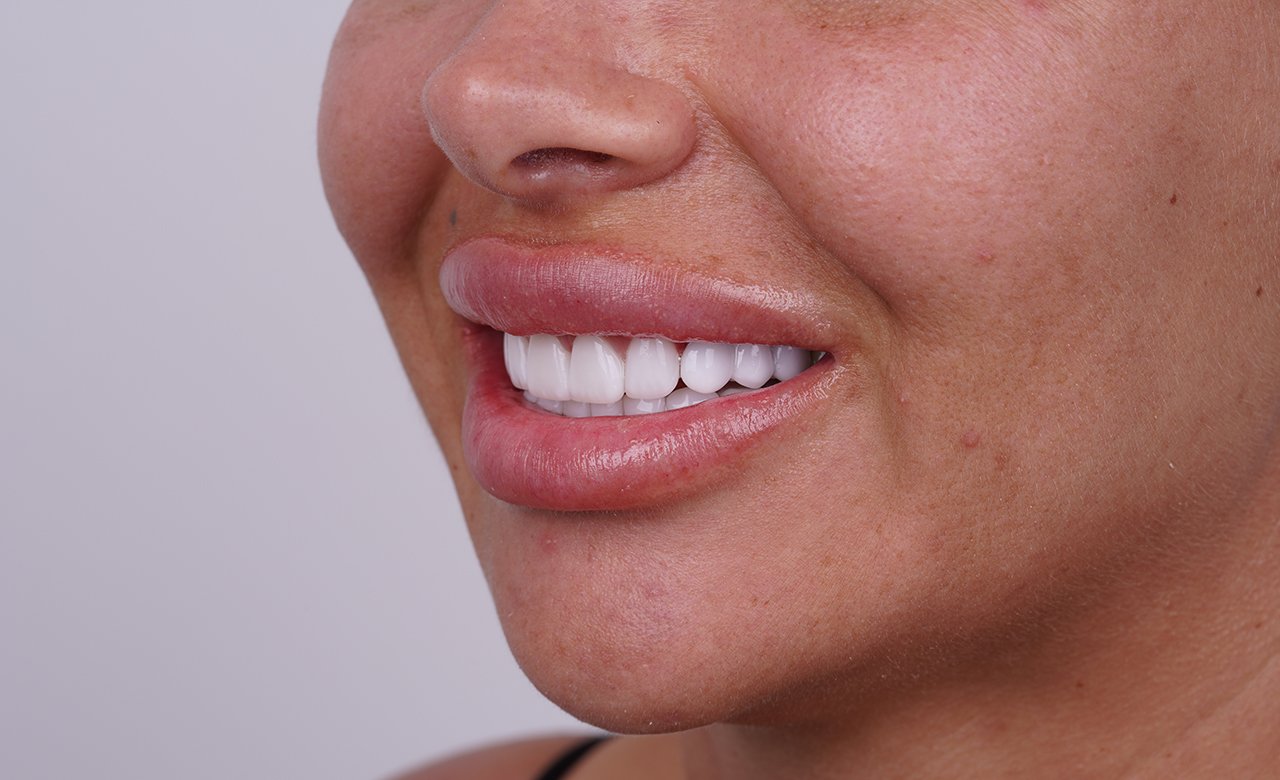
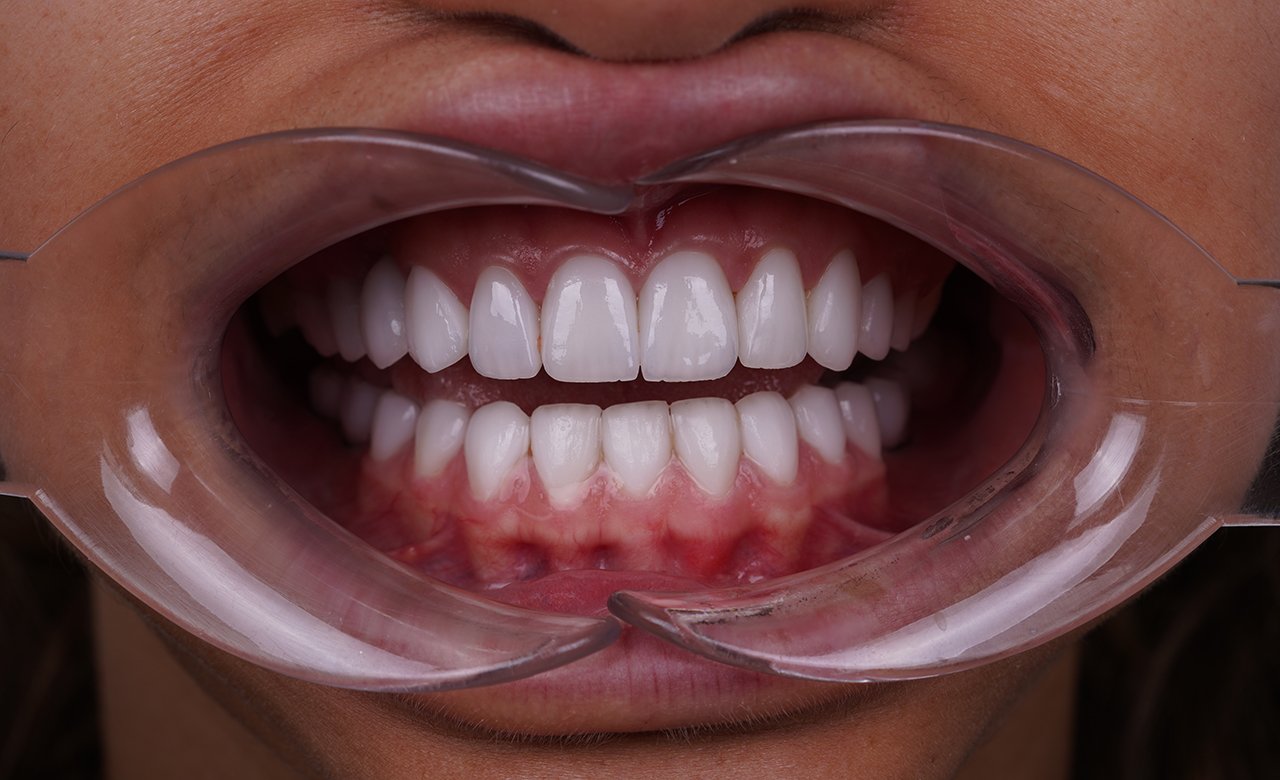
What is the cost of cosmetic dentistry?
For people who are interested in benefiting from cosmetic dental procedures, the foremost question in their minds would be, “How much is cosmetic dentistry?” Cosmetic dentistry procedures costs depend on the type of procedure you are interested in, and the complexity of the work required. The actual financial cost of dental cosmetic surgery and other procedures may also vary from cosmetic dentist to cosmetic dentist. What we are providing here would be approximate costs of cosmetic treatment for teeth.
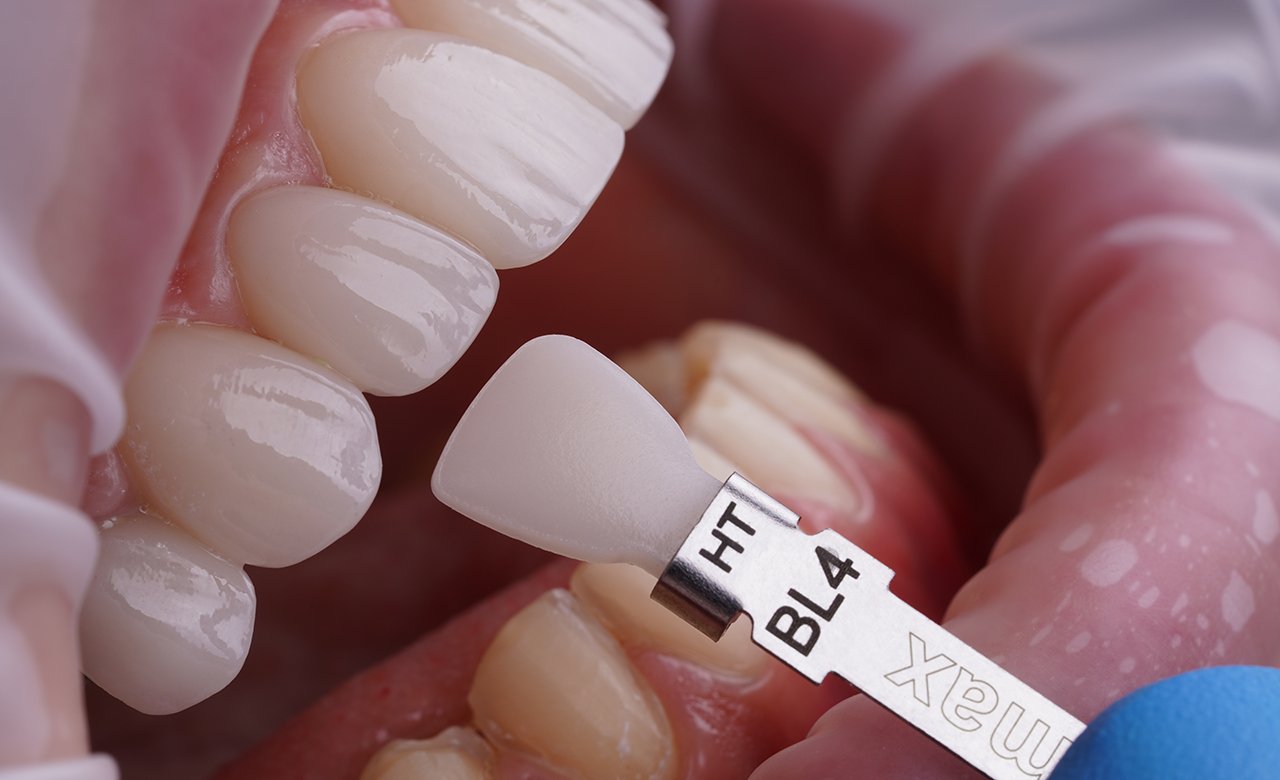

WHAT ARE THE BENEFITS OF ALL-ON-4 DENTAL IMPLANTS?
No Waiting for New Teeth: Most of the time, temporary dentures can be placed on the same day as the implant surgery. That means enjoying a new and improved smile right away!
Improved Appearance: Implant-retained dentures look and feel natural, and the stimulation that your jaw receives will stop it from breaking down so that it can continue supporting the rest of your face.
Long-Lasting: Dental implants have been known to last the rest of your life, and they don’t require much in the way of special maintenance to do so.
Enhanced Confidence: The strength and stability of your new teeth will help you enjoy your favorite foods again without worrying about your teeth slipping, and you won’t have to worry about them moving around whenever you laugh or smile.
All-On-4 VS Traditional Dental Implants
While traditional implant procedures remain a reliable solution for patients that have suffered any amount of tooth loss, All-on-4 does have several important advantages:
It typically does not require preparatory procedures such as bone grafts.
There is usually less recovery time required since fewer implants are used.
If temporary dentures can be placed, you won’t have to go without teeth for several months.
The Procedure
Before any treatment is started our dentist will examine you thoroughly to ensure that there is sufficient bone mass to provide an anchor for the posts. At this point it may be necessary for you to have x-rays or CT scans to obtain the required information. Having either all on 4 or 6 dental implants is the procedure that will succeed due to the in depth planning and work that is done before the young implants are applied. We pride ourselves on our very high success rate with dental implant cases
Before you have the procedure a model of your teeth or how your teeth used to be will be made and can be improved and adjusted as you require
Once the procedure starts the dentist will make small cuts into the gumsfor the titanium posts to be introduced through
At this point a set of temporary teeth will be fitted to the implant
Once the dentist is satisfied that the bone has regenerated and that the wounds caused by the incisions are healed, treatment can go ahead
The final prosthesis will be attached after around 4-6 months.Dental implants are both functionally and aesthetically indistinguishable from natural teeth.
Care After Implant
Caring for your newly inserted implants is not difficult. You will continue to clean with a normal standard toothbrush and to floss your teeth. You will be instructed fully on how to care for your new implanted teeth. You will also need to come for regular cheque ups so that the dentist can cheque your mouth and that the implants are all fine.
The Cost of Dental Implnats for All-on-Four
There is no doubt that implants for the full mouth can completely change lives improving the enjoyment and restoring confidence. However this procedure should only be carried out by those who have the highest level of expertise and the skill required. The cost of this procedure therefore reflects these facts and implants – all on 4 as a full mouth tooth replacement starts from about £12,000.
Book Your Free Consultation Today
Ready to transform your smile in Turkey?
Contact Best Dental İstanbul today for your personalized treatment plan and free online consultation.
Frequently Asked Questions (FAQ) – Cosmetic Dentistry
What is Cosmetic Dentistry?
Many people in the world today have a desire to enhance their appearance so that they can look their best seeing as physical appearance plays a crucial part in self-esteem and life quality.
Cosmetic dentistry is a beauty trend that has evolved into a multifaceted profession in its approach to creating not only the perfect smile but also to enhance the appearance of dentition and facial aesthetics.
Unlike traditional dentistry, which focuses on oral hygiene and oral diseases, cosmetic dentistry is mainly focussed on elective (or desired) treatments to improve the physical appearance of the teeth, mouth and smile. During the past few years cosmetic dentistry has become more popular because of the advancements in technology and the treatments involved have become more accessible.
Selecting the right cosmetic dentist requires a lot of consideration. An increasing number of cosmetic dentists are offering cosmetic dental treatments and it is therefore of vital importance to consider all the cosmetic dentistry options available to you.
Price is another factor to think about and a cosmetic dentistry guide will provide you with information about the estimated costs of cosmetic dentistry treatments.
What Are Dental Veneers?
Veneers are placed onto the teeth to recreate your teeth’s vibrant natural look, while also providing strength and resilience that can be compared to natural tooth enamel. They help with correcting the color of discoloured teeth and with aligning teeth that are slightly out of position or even to hide chips or cracks in the teeth. You can say that veneers can give your teeth a fresh new life!
Seeing as cosmetic dentistry needs to be practiced in the most conservative manner possible while satisfying the restorative needs and aesthetic desires of the patient, clinicians need to choose suitable materials and techniques.
Veneers have been regarded as one of the most viable options based on their longevity, strength, biocompatibility, aesthetics and conservative nature. For these reasons, the patient’s smile can be enhanced in a minimally invasive way with the use of veneers.
There are various types of veneer materials commonly used in dental practice these days. Porcelain laminate veneers are becoming increasingly popular among dental practitioners for restoration procedures and for aesthetic use.
What Are Dental Bridges?
A bridge is a type of dental restoration used to replace missing teeth. It spans across an area with no teeth and it is generally made of an artificial tooth that is fused between two crowns.
A bridge is firmly held in place by the teeth on each side of the missing tooth or even by adjacent dental implants. Many people prefer bridges as they are permanent dental prostheses that can’t be removed. Talk about effortless!
Restorative vs. Cosmetic Dentistry
Restorative dentistry is a category of dentistry concerned with the diagnosis and management of diseases of the teeth, oral cavity and supporting structures.
Restorative dental care includes the rehabilitation of the function as well as the aesthetic requirements of the teeth and the oral cavity.
The co-ordination of a multi-professional network that incorporates several types of dental restoration is often used to achieve these objectives.
Cosmetic dentistry, on the other hand, is any dental work done to improve a person’s physical appearance (and not necessarily to improve the function) of the teeth, gums or bite.
The benefits of cosmetic dentistry are primarily focused on improving dental aesthetics in color, shape, size, position, alignment and the overall appearance of the smile.
What are Cosmetic Dental Treatments?
It is human nature for people to connect positive personality characteristics to the level of attractiveness of a person and, therefore, cosmetic dental procedures can help you attain the perfect look to suite your beautiful personality.
During the last 50 years or so cosmetic dentistry has experienced a significant transformation and types of cosmetic dental procedures have evolved greatly.
Cosmetic dental treatments include, but are not limited to: dental veneers, crowns, bridges, fillings, implants and tooth whitening.
What Are Dental Crowns?
If a tooth is damaged but not lost; the shape, function and appearance can be restored by using a crown. How nifty is this?
Crowns are also known as caps and they are hollow, artificial teeth used to cover teeth that have been damaged. A crown restores the tooth and it protects the tooth from any further damage. Crowns are also used to cover misshapen or discoloured teeth.
What Are Dental Fillings?
Different types of fillings can be used to fill cavities. When you visit the dentist, your existing fillings are checked to see if they need to be replaced and your dentist will also look for signs of decay for which you may need fillings.
What Are Cast Gold Fillings?
Cast gold fillings are made from a mixture of gold and other metals like silver and copper. They are made in a dental lab and then they are sent back to your dentist who cements them into your mouth.
Gold fillings are stronger than amalgam fillings and also last for a long time, yet still, they don’t look natural and they are more expensive than other types of fillings.
The types of tooth-coloured fillings include:Glass Ionomer Materials, Glass Ionomer Materials, Porcelain Materials
What Is Dental Tooth Whitening?
Our teeth’s natural colour is a light greyish-yellow shade, but as we age they tend to darken and their appearance may be altered by the accumulation of stains acquired from bad habits like smoking or even by certain foods or drinks that we enjoy.
Even though teeth are not actually supposed to be completely white, many people desire a brighter smile. Tooth whitening offers a speedy, non-invasive solution to enhance your smile.
A variety of whitening options have become widely available for the convenience of consumers. Such products can be separated into two categories namely surface whiteners and bleaches.
✅ Best Dental İstanbul is here to guide you at every step of your All on 6 implant journey in Turkey, from your first consultation to your final smile transformation.




